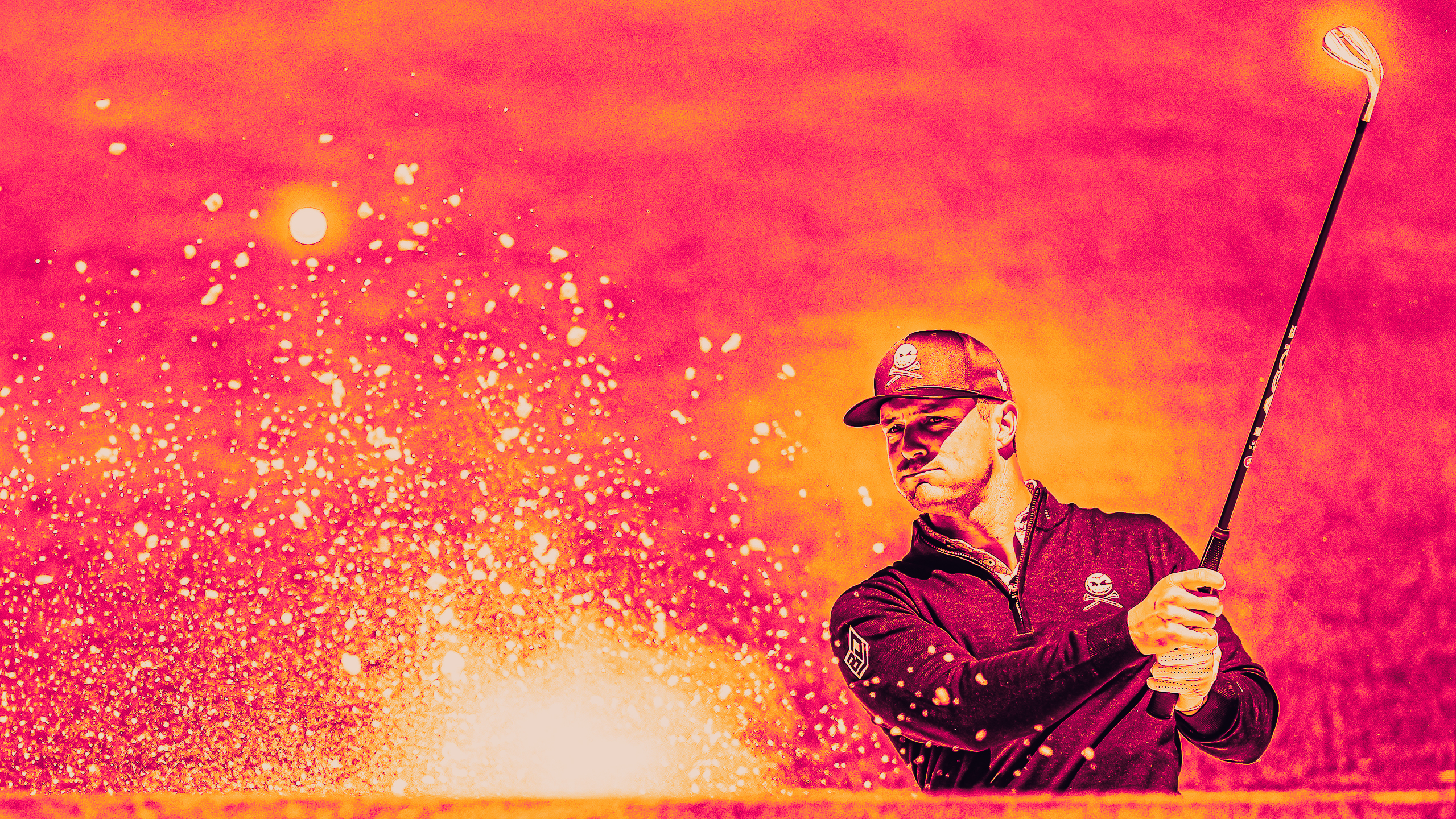- TECHSWU
- Posts
- TECHSWU #55
TECHSWU #55
Welcome to TECHSWU, your go-to destination for all things tech that matter in your daily life!



Bryson DeChambeau has drawn attention once again with his introduction of 3D-printed irons to the PGA Tour. The irons, which feature a curved face, were created by boutique clubmaker Avoda Golf and aim to improve DeChambeau's game by reducing the sidespin and increasing accuracy.
The golfer has been playing with the irons since April and has seen success, placing second at the PGA Championship last month. The use of 3D-printed technology in golf clubs has the potential to revolutionize the sport due to its ability to quickly create and test designs without incurring high costs.
While DeChambeau's irons cost about $10,000, Cobra Golf recently released commercially available 3D-printed irons for $3,000. The accessibility of 3D printing has the potential to change the world of club-making and make customized clubs more accessible to amateur golfers.

Will AI outsmart, sting, or assist us? This article explores the capabilities of artificial intelligence (AI) and its potential impact on human life. It discusses the differences between human and artificial intelligence, highlighting areas where humans excel, such as maintaining cognitive models of the world and being cognitively flexible, and areas where AI has the potential to surpass humans, such as memory and computational ability.
The article also examines the ways in which AI can be both impressive and flawed, citing examples of AI generating accurate and creative images as well as cases where AI produced offensive and biased results. Additionally, the article discusses the potential effects of AI on jobs and the distribution of wealth and status, emphasizing the importance of AI skills and the need for good judgment and critical thinking to mitigate inequalities.
Overall, the article presents a balanced view of AI, acknowledging its strengths while cautioning against blind reliance and emphasizing the role of human intelligence in shaping its impact.

The TerraMow Robot Mower, a new boundary-wire free robotic lawn mower, is now available for crowdfunding on Kickstarter. The mower is equipped with AI Vision technology and features a one-click mow set-up, multiple mowing modes, and Wi-Fi and cellular connectivity.
It uses TerraVision, a camera-based navigation system with a SLAM algorithm, to navigate the garden without the need for boundary wires. The mower can detect and avoid obstacles in real-time and automatically map the area.
It offers three mowing modes – standard, multi-base, and spot – and can handle narrow spaces and inclines up to 45%. The TerraMow app, available for iOS and Android, allows users to control the mower.
Those who back the crowdfunding campaign can receive up to a 45% discount on the retail price. Delivery is expected in July, but as with any crowdfunding campaign, there is no guarantee of receiving the product.

Collaborative Robotics, a company founded by Brad Porter in 2022, has hired Michael Vogelsong, the former Amazon AI leader, to head its new Foundation Models AI team in Seattle. Collaborative Robotics is known as Cobot and is currently developing a mobile collaborative robot for use at a transload facility in Seattle.
The company's expansion in Seattle, after receiving a $100 million Series B funding, highlights the city's rise as an AI hub. The company plans to recruit AI talent in Seattle, where there are fewer options for specialists compared to Silicon Valley.
With the aim of developing robots that can understand and assist humans in tasks, Cobot's new Foundation Models AI team will focus on fundamental research and partnerships to advance the AI and robotics field.

In the era of wearable devices and trackers, technology has also advanced to protect our furry friends. One in three pets gets lost at least once in its lifetime, making it difficult for them to find their way back home.
Thankfully, new tech advancements have emerged to keep pets safe. Pet ID tags with QR codes allow finders to scan the code and receive vital information about the pet, giving pet owners a way to locate their beloved companion.
NFC tags, also known as PET, use NFC technology and encryption to allow smartphone users to scan the tag and send an instant message to the pet parent. GPS tracking devices made for pets provide numerous features such as two-way communication, water resistance, and real-time tracking, giving pet owners peace of mind.
Microchipping is another option, where a tiny chip is inserted under the pet's skin and can be scanned to retrieve information about the owner. Finally, the introduction of 24/7 Safety Command Stations ensures that pet safety services are just a scan away, allowing for quick reunions between owners and their missing pets.

German students have built an electric vehicle (EV) prototype that can travel 1,600 miles on a single charge, shattering the previous record of 999.5 miles.
The muc022 prototype, developed by students from the Technical University of Munich, achieved this feat in a feat in an empty hangar at Munich airport by modifying a vehicle used in previous competitions. The car weighs just 374 pounds and has an energy consumption ratio of 103 miles per kilowatt-hour, making it one of the most efficient EVs in the world.
This breakthrough in energy efficiency demonstrates the potential for EVs to travel much greater distances without needing to stop and recharge, pushing forward the development and adoption of sustainable transportation.

Chinese automaker Nio has announced that it will open trials of its semi-solid-state battery packs to the public before their official rollout. Semi-solid-state batteries are a newer technology in the EV market and offer a safer, lighter, and more energy-dense battery product compared to lithium-ion versions.
The batteries use a solid electrolyte material along with liquid or gel electrolytes, providing greater thermal stability and faster recharging. The trials were conducted primarily for users of Nio's vehicle rental service, with customers who rented a Nio BEV for three days given the opportunity to test the batteries at no extra charge.
Additionally, Nio EV users randomly received the upgrade at Nio Power charging and swapping stations, where it only takes three minutes to swap in a new, fully charged battery. The trials provide the company with real-world testing opportunities, and other automakers, such as Toyota, Mercedes, and Volkswagen, are also exploring similar battery technologies.

Elon Musk outlined his vision for the future of Tesla at the company's Annual General Meeting. He discussed the advancements in autonomous driving technology and predicted that vehicle autonomy could "10x the value of the company.
" Musk also revealed plans for a Tesla autonomous fleet, where owners can add their cars to the fleet and generate income while not using their vehicles. Musk introduced the idea of a humanoid robot called Optimus, which he believes will revolutionize industries and everyday life.
He envisions a future where these robots perform a wide range of tasks. Musk also emphasized Tesla's commitment to sustainable energy and manufacturing, highlighting the company's advancements in electric vehicles, stationary storage, and solar power.
He teased several new products in development and mentioned Tesla's plans to expand into new markets. The meeting concluded with Musk's reflections on his optimistic outlook and relentless drive.


Collaborative Robotics, a company known for its collaborative robots (cobots), is opening a new office in Seattle and forming a dedicated AI team to explore the cutting edge of AI in enhancing robotic capabilities. Led by Michael Vogelsong, a veteran of Amazon's Deep Learning Tech team, the Foundation Models AI team will focus on areas such as bimanual manipulation and low-latency multimodal models to create robots that can understand and respond to complex tasks and environments.
The company has also secured a research grant for University of Washington professor Sidd Srinivasa to support advanced AI research. This move follows a successful $100 million funding round in April.
Collaborative Robotics aims to revolutionize the adaptability and precision of robotic tasks through the integration of advanced machine learning techniques.

The Sustainable and autonomous IoT ecosystems Catalyst is developing an IoT management platform that can meet the needs of connected vehicles and devices as they move from place to place. This platform aims to optimize the performance of the "Internet of Moving Things" (IoMT) by delivering continuous real-time control as connected devices change location and handover coverage to new edge nodes.
The Catalyst is leveraging AI, machine learning, and intent-based networking to enable devices to discover new IoT services, negotiate network connectivity, and orchestrate provisioning as they move. The platform will also focus on energy efficiency and provide actionable insights for sustainable service delivery.
By harnessing TM Forum standards and IoT architectures, the Catalyst aims to create a digital underlay for network and IoT services that can adapt to the needs of moving devices and generate new monetizable opportunities for CSPs.

Researchers at San Diego State University have developed an artificial intelligence (AI) robot named Pepper with the hope of assisting people with mental health concerns. Pepper is part of the James Silberrad Brown Center for AI Research at SDSU, and her ability to process large amounts of data quickly and recognize human emotions makes her a valuable tool for mental health support.
The researchers have received funding from the Brown Foundation to create a robot that can act as an early warning system for potential mental health episodes. By monitoring changes in a person's behavior, Pepper or a similar device could alert doctors and intervene before an episode occurs.
The goal is to move from reactionary psychiatry to preemptive care. While Pepper is not intended to replace human doctors, she can provide insights and suggestions to help healthcare professionals make more informed decisions.
The researchers are currently in clinical trials and hope to see Pepper outside of the lab in the future.


In this engaging article, Justin Eastzer, a CNET Voices Contributor and founder of Diabetech, shares his personal journey with Type 1 diabetes and highlights two important gadgets that have made managing the condition easier for him. He starts by discussing how he was misdiagnosed with Type 2 diabetes initially, but thanks to the advice he received on TikTok, he got the correct diagnosis of Type 1.
5 or latent autoimmune disease in adults (LADA). Eastzer then introduces continuous glucose monitors (CGMs), wearable devices that measure blood glucose levels every five minutes and send the information to a smartphone.
He explains how CGMs have helped him stay on top of his glucose levels and make adjustments to his insulin dosing. He then talks about insulin pumps, devices that deliver insulin throughout the day, and shares his experience with a tubeless pump called Omnipod.
Eastzer expresses his hope for the development of a true "artificial pancreas" that can automate insulin delivery and keep blood glucose levels in the target range. He concludes by encouraging readers to be aware of these life-saving technologies and support themselves and their loved ones with diabetes.
Overall, Eastzer's personal story and enthusiasm for diabetes gadgets make for an engaging and informative read.

